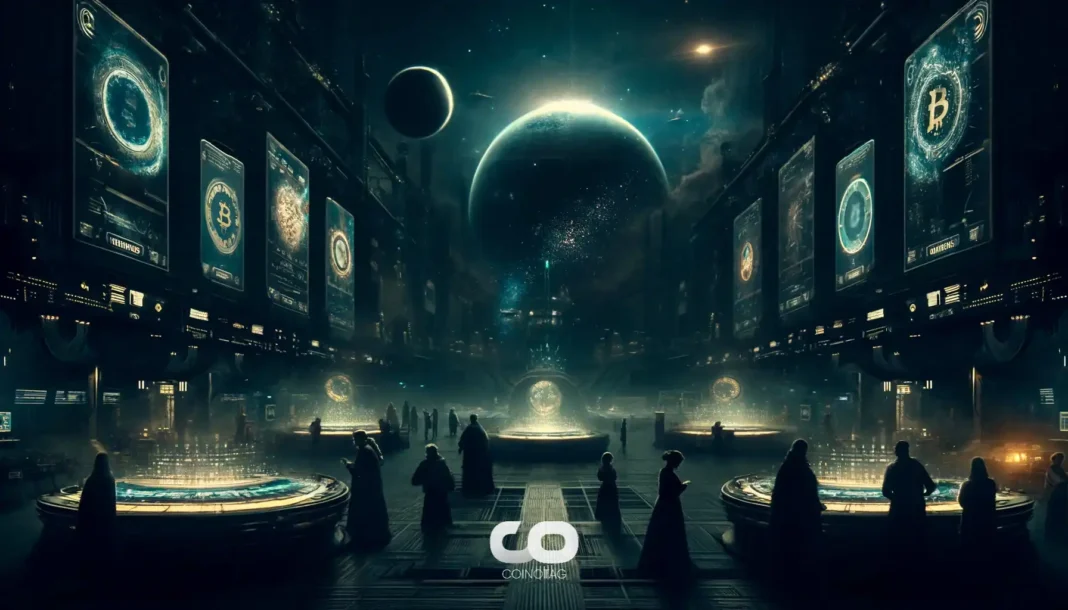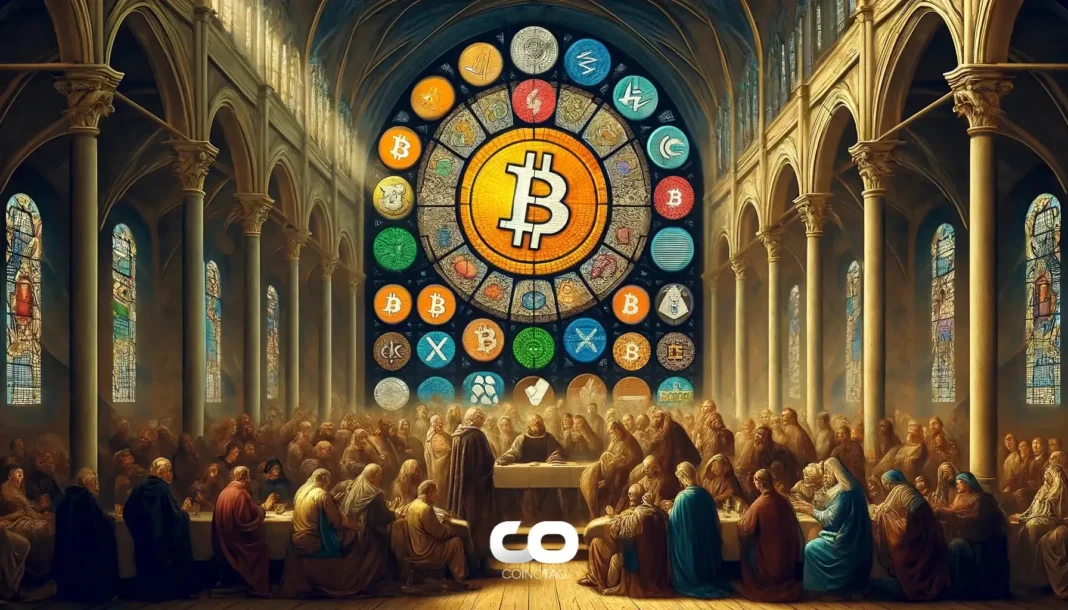| COINOTAG recommends • Exchange signup |
| 💹 Trade with pro tools |
| Fast execution, robust charts, clean risk controls. |
| 👉 Open account → |
| COINOTAG recommends • Exchange signup |
| 🚀 Smooth orders, clear control |
| Advanced order types and market depth in one view. |
| 👉 Create account → |
| COINOTAG recommends • Exchange signup |
| 📈 Clarity in volatile markets |
| Plan entries & exits, manage positions with discipline. |
| 👉 Sign up → |
| COINOTAG recommends • Exchange signup |
| ⚡ Speed, depth, reliability |
| Execute confidently when timing matters. |
| 👉 Open account → |
| COINOTAG recommends • Exchange signup |
| 🧭 A focused workflow for traders |
| Alerts, watchlists, and a repeatable process. |
| 👉 Get started → |
| COINOTAG recommends • Exchange signup |
| ✅ Data‑driven decisions |
| Focus on process—not noise. |
| 👉 Sign up → |
SharpLink’s Ethereum treasury is a strategic reserve approach that accumulates and holds ETH to drive institutional adoption. Joseph Chalom says the firm, with 837,230 ETH (~0.69% of circulating supply), uses transparency and education to position Ethereum as a mainstream financial asset.
-
SharpLink holds 837,230 ETH (≈0.69% of circulating ETH) as a reserve asset.
-
Co-CEO Joseph Chalom emphasizes transparency, SEC reporting, and weekly disclosures to reduce systemic risk.
-
SharpLink sees crypto treasuries as a potential catalyst for institutional Ethereum adoption, not a market black swan.
SharpLink Ethereum treasury: COINOTAG reports Joseph Chalom’s view on institutional ETH adoption and transparency — read actionable insights now.
| COINOTAG recommends • Professional traders group |
| 💎 Join a professional trading community |
| Work with senior traders, research‑backed setups, and risk‑first frameworks. |
| 👉 Join the group → |
| COINOTAG recommends • Professional traders group |
| 📊 Transparent performance, real process |
| Spot strategies with documented months of triple‑digit runs during strong trends; futures plans use defined R:R and sizing. |
| 👉 Get access → |
| COINOTAG recommends • Professional traders group |
| 🧭 Research → Plan → Execute |
| Daily levels, watchlists, and post‑trade reviews to build consistency. |
| 👉 Join now → |
| COINOTAG recommends • Professional traders group |
| 🛡️ Risk comes first |
| Sizing methods, invalidation rules, and R‑multiples baked into every plan. |
| 👉 Start today → |
| COINOTAG recommends • Professional traders group |
| 🧠 Learn the “why” behind each trade |
| Live breakdowns, playbooks, and framework‑first education. |
| 👉 Join the group → |
| COINOTAG recommends • Professional traders group |
| 🚀 Insider • APEX • INNER CIRCLE |
| Choose the depth you need—tools, coaching, and member rooms. |
| 👉 Explore tiers → |
What is SharpLink’s Ethereum treasury strategy?
SharpLink’s Ethereum treasury is an accumulation-and-hold policy that treats ETH as a corporate reserve asset rather than a trading instrument. The firm discloses weekly holdings, emphasizes regulatory compliance as a public company, and uses debt and buybacks for liquidity instead of selling ETH.
How is SharpLink educating traditional finance about Ethereum?
Joseph Chalom says SharpLink conducts targeted education for non-crypto firms, explaining stablecoins, tokenization, and programmable money. The company highlights capital-efficiency benefits: reduced capital requirements for trading and faster settlement. SharpLink’s disclosures and public-company reporting aim to build institutional trust.
| COINOTAG recommends • Exchange signup |
| 📈 Clear interface, precise orders |
| Sharp entries & exits with actionable alerts. |
| 👉 Create free account → |
| COINOTAG recommends • Exchange signup |
| 🧠 Smarter tools. Better decisions. |
| Depth analytics and risk features in one view. |
| 👉 Sign up → |
| COINOTAG recommends • Exchange signup |
| 🎯 Take control of entries & exits |
| Set alerts, define stops, execute consistently. |
| 👉 Open account → |
| COINOTAG recommends • Exchange signup |
| 🛠️ From idea to execution |
| Turn setups into plans with practical order types. |
| 👉 Join now → |
| COINOTAG recommends • Exchange signup |
| 📋 Trade your plan |
| Watchlists and routing that support focus. |
| 👉 Get started → |
| COINOTAG recommends • Exchange signup |
| 📊 Precision without the noise |
| Data‑first workflows for active traders. |
| 👉 Sign up → |
How will the crypto treasury trend affect market stability?
SharpLink believes the crypto treasury trend will be stabilizing rather than catastrophic. With 837,230 ETH (~0.69% of circulating supply) and a current valuation reported at over $3.7 billion, the company positions ETH as a reserve asset and plans to access liquidity through debt and buybacks rather than spot sales.
Comparison: SharpLink (ETH) vs Strategy/MicroStrategy (BTC)
| Metric |
SharpLink (Ethereum) |
Strategy (Bitcoin) |
| Reserve Asset |
Ethereum (accumulator) |
Bitcoin (accumulator) |
| Reported Holdings |
837,230 ETH (~0.69% supply) |
Over $72 billion in BTC (company disclosures) |
| Liquidity Strategy |
Debt instruments, stock buybacks |
Convertible notes and capital raises |
| Transparency |
Weekly public disclosures (SEC/Nasdaq rules) |
Regular investor communications and filings |
Why does SharpLink call this a “white swan” event?
Chalom contrasts the transparent, regulated nature of public-company treasuries with opaque failures like FTX. He argues that public reporting, SEC oversight, and Nasdaq rules make a large-scale misuse of customer funds unlikely. Instead, he expects the trend to accelerate institutional ETH adoption through visibility and education.
| COINOTAG recommends • Traders club |
| ⚡ Futures with discipline |
| Defined R:R, pre‑set invalidation, execution checklists. |
| 👉 Join the club → |
| COINOTAG recommends • Traders club |
| 🎯 Spot strategies that compound |
| Momentum & accumulation frameworks managed with clear risk. |
| 👉 Get access → |
| COINOTAG recommends • Traders club |
| 🏛️ APEX tier for serious traders |
| Deep dives, analyst Q&A, and accountability sprints. |
| 👉 Explore APEX → |
| COINOTAG recommends • Traders club |
| 📈 Real‑time market structure |
| Key levels, liquidity zones, and actionable context. |
| 👉 Join now → |
| COINOTAG recommends • Traders club |
| 🔔 Smart alerts, not noise |
| Context‑rich notifications tied to plans and risk—never hype. |
| 👉 Get access → |
| COINOTAG recommends • Traders club |
| 🤝 Peer review & coaching |
| Hands‑on feedback that sharpens execution and risk control. |
| 👉 Join the club → |
Frequently Asked Questions
Will SharpLink’s ETH reserves pose a market risk?
SharpLink argues no — as a public company it follows SEC and Nasdaq rules and provides weekly disclosures. The firm plans to raise liquidity through debt and stock buybacks, treating ETH as a reserve rather than a liquidation asset.
How does SharpLink’s approach differ from past crypto failures?
Unlike private failures that hid customer funds, SharpLink emphasizes transparency: public filings, weekly reports, and executive accountability. Chalom points to public-company governance as a mitigating factor.
Key Takeaways
- Reserve strategy: SharpLink accumulates ETH as a long-term reserve asset, not for trading.
- Transparency: Weekly holdings disclosures and regulatory reporting reduce systemic risk.
- Institutional adoption: Education on stablecoins and tokenization aims to bring traditional finance to Ethereum.
Conclusion
SharpLink’s Ethereum treasury strategy frames large ETH holdings as a catalyst for institutional adoption rather than a crisis risk. Joseph Chalom emphasizes transparency, regulatory compliance, and education to make Ethereum a mainstream financial network. Expect continued disclosures and outreach as adoption grows.
| COINOTAG recommends • Exchange signup |
| 📈 Clear control for futures |
| Sizing, stops, and scenario planning tools. |
| 👉 Open futures account → |
| COINOTAG recommends • Exchange signup |
| 🧩 Structure your futures trades |
| Define entries & exits with advanced orders. |
| 👉 Sign up → |
| COINOTAG recommends • Exchange signup |
| 🛡️ Control volatility |
| Automate alerts and manage positions with discipline. |
| 👉 Get started → |
| COINOTAG recommends • Exchange signup |
| ⚙️ Execution you can rely on |
| Fast routing and meaningful depth insights. |
| 👉 Create account → |
| COINOTAG recommends • Exchange signup |
| 📒 Plan. Execute. Review. |
| Frameworks for consistent decision‑making. |
| 👉 Join now → |
| COINOTAG recommends • Exchange signup |
| 🧩 Choose clarity over complexity |
| Actionable, pro‑grade tools—no fluff. |
| 👉 Open account → |
| COINOTAG recommends • Members‑only research |
| 📌 Curated setups, clearly explained |
| Entry, invalidation, targets, and R:R defined before execution. |
| 👉 Get access → |
| COINOTAG recommends • Members‑only research |
| 🧠 Data‑led decision making |
| Technical + flow + context synthesized into actionable plans. |
| 👉 Join now → |
| COINOTAG recommends • Members‑only research |
| 🧱 Consistency over hype |
| Repeatable rules, realistic expectations, and a calmer mindset. |
| 👉 Get access → |
| COINOTAG recommends • Members‑only research |
| 🕒 Patience is an edge |
| Wait for confirmation and manage risk with checklists. |
| 👉 Join now → |
| COINOTAG recommends • Members‑only research |
| 💼 Professional mentorship |
| Guidance from seasoned traders and structured feedback loops. |
| 👉 Get access → |
| COINOTAG recommends • Members‑only research |
| 🧮 Track • Review • Improve |
| Documented PnL tracking and post‑mortems to accelerate learning. |
| 👉 Join now → |
Author: COINOTAG · Published: 2025-09-11 · Updated: 2025-09-11
| COINOTAG recommends • Exchange signup |
| 🎯 Focus on process over noise |
| Plan trades, size positions, execute consistently. |
| 👉 Sign up → |
| COINOTAG recommends • Exchange signup |
| 🛠️ Simplify execution |
| Keep decisions clear with practical controls. |
| 👉 Get started → |
| COINOTAG recommends • Exchange signup |
| 📊 Make data your edge |
| Use depth and alerts to avoid guesswork. |
| 👉 Open account → |
| COINOTAG recommends • Exchange signup |
| 🧭 Be prepared, not reactive |
| Turn setups into rules before you trade. |
| 👉 Create account → |
| COINOTAG recommends • Exchange signup |
| ✍️ Plan first, then act |
| Entries, exits, and reviews that fit your routine. |
| 👉 Join now → |
| COINOTAG recommends • Exchange signup |
| 🧩 Consistency beats intensity |
| Small, repeatable steps win the long run. |
| 👉 Sign up → |
| COINOTAG recommends • Members‑only research |
| 📌 Curated setups, clearly explained |
| Entry, invalidation, targets, and R:R defined before execution. |
| 👉 Get access → |
| COINOTAG recommends • Members‑only research |
| 🧠 Data‑led decision making |
| Technical + flow + context synthesized into actionable plans. |
| 👉 Join now → |
| COINOTAG recommends • Members‑only research |
| 🧱 Consistency over hype |
| Repeatable rules, realistic expectations, and a calmer mindset. |
| 👉 Get access → |
| COINOTAG recommends • Members‑only research |
| 🕒 Patience is an edge |
| Wait for confirmation and manage risk with checklists. |
| 👉 Join now → |
| COINOTAG recommends • Members‑only research |
| 💼 Professional mentorship |
| Guidance from seasoned traders and structured feedback loops. |
| 👉 Get access → |
| COINOTAG recommends • Members‑only research |
| 🧮 Track • Review • Improve |
| Documented PnL tracking and post‑mortems to accelerate learning. |
| 👉 Join now → |







